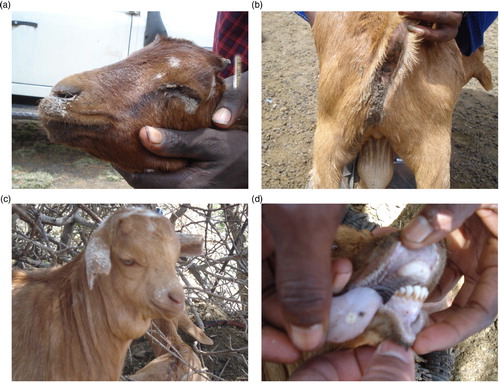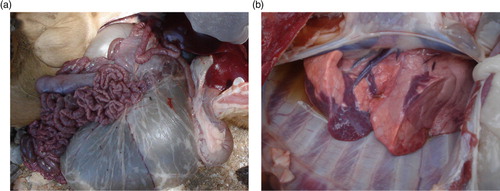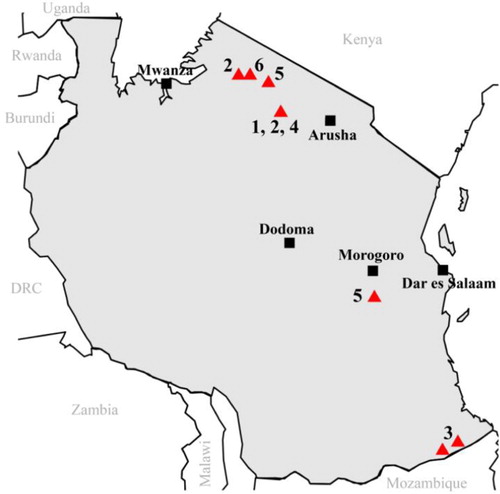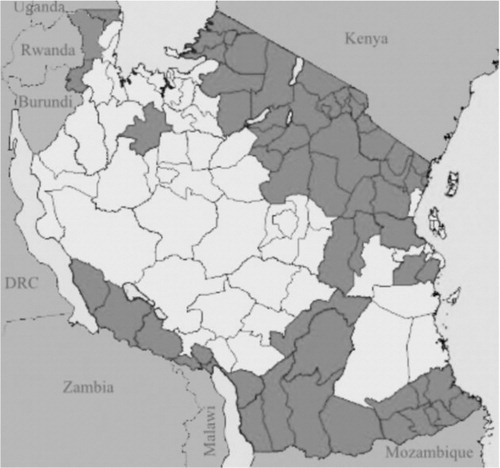Figures & data
Fig. 1 Clinical signs of peste des petits ruminants in goats of Ngorongoro, Tanzania. The pictures show oculonasal discharges and matting of eyelids (a) diarrhea soiling the perineum (b) submandibular edema (c), and sores and nodules on the gums and tongue (d).

Fig. 2 Postmortem findings in goats with peste des petits ruminants. Hemorrhages in the intestines (a) and pneumonia (b) in a goat confirmed with PPR in Ngorongoro, Tanzania.

Fig. 3 Sample collection sites from selected PPR studies in Tanzania. Triangles indicate sampling sites and numbers refer to the study cited (see ).

Table 1 Numbers indicate sample collection areas on the map in and type of analyses
Fig. 4 Districts with seropositive cases for PPR, indicated in dark grey. Districts were sampled during a nationwide surveillance in 2008–2013; in one district (Mwanza), surveillance was done independently by a zonal veterinary center at the end of 2012. Source: Department of Veterinary Services, Tanzania.

